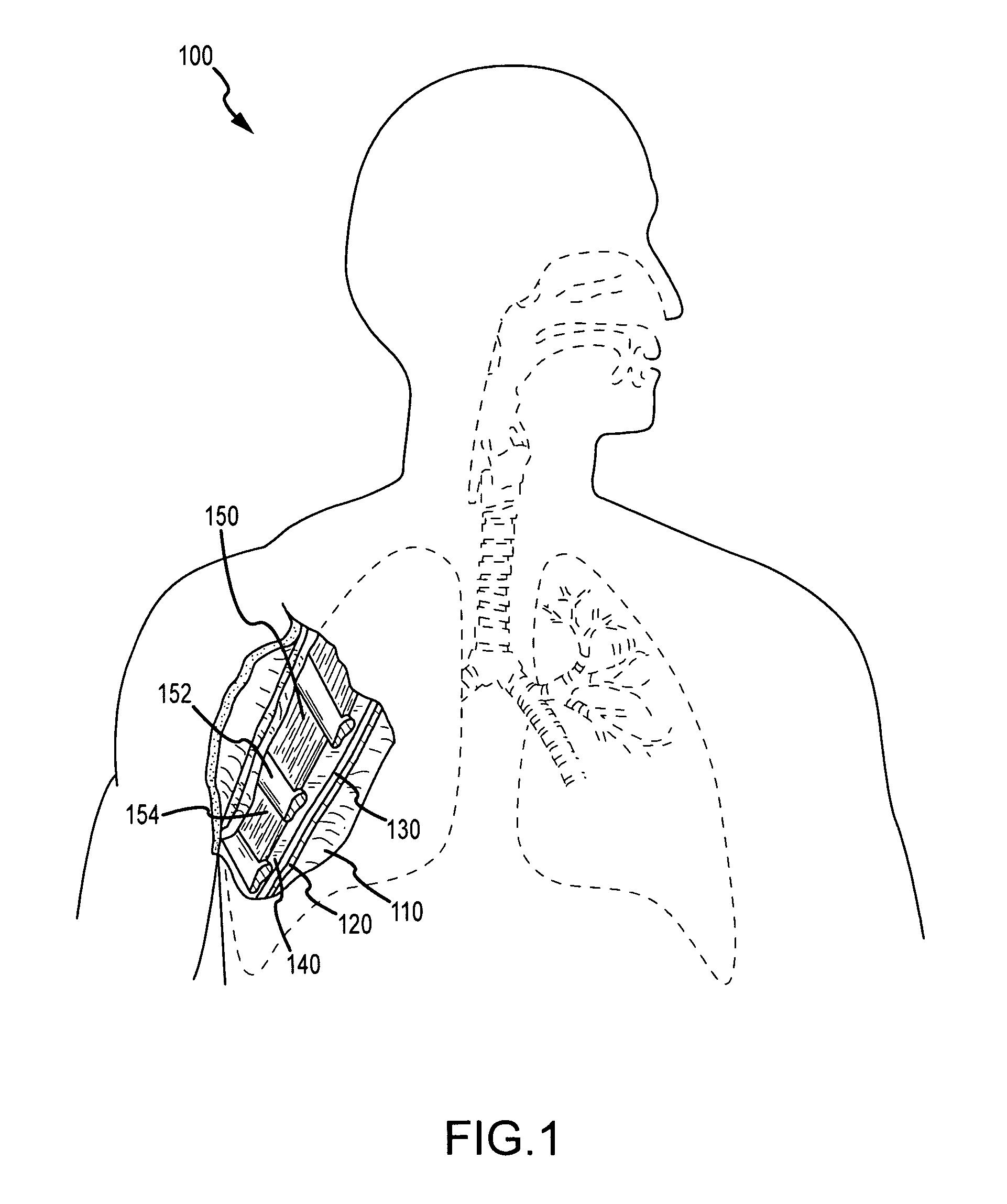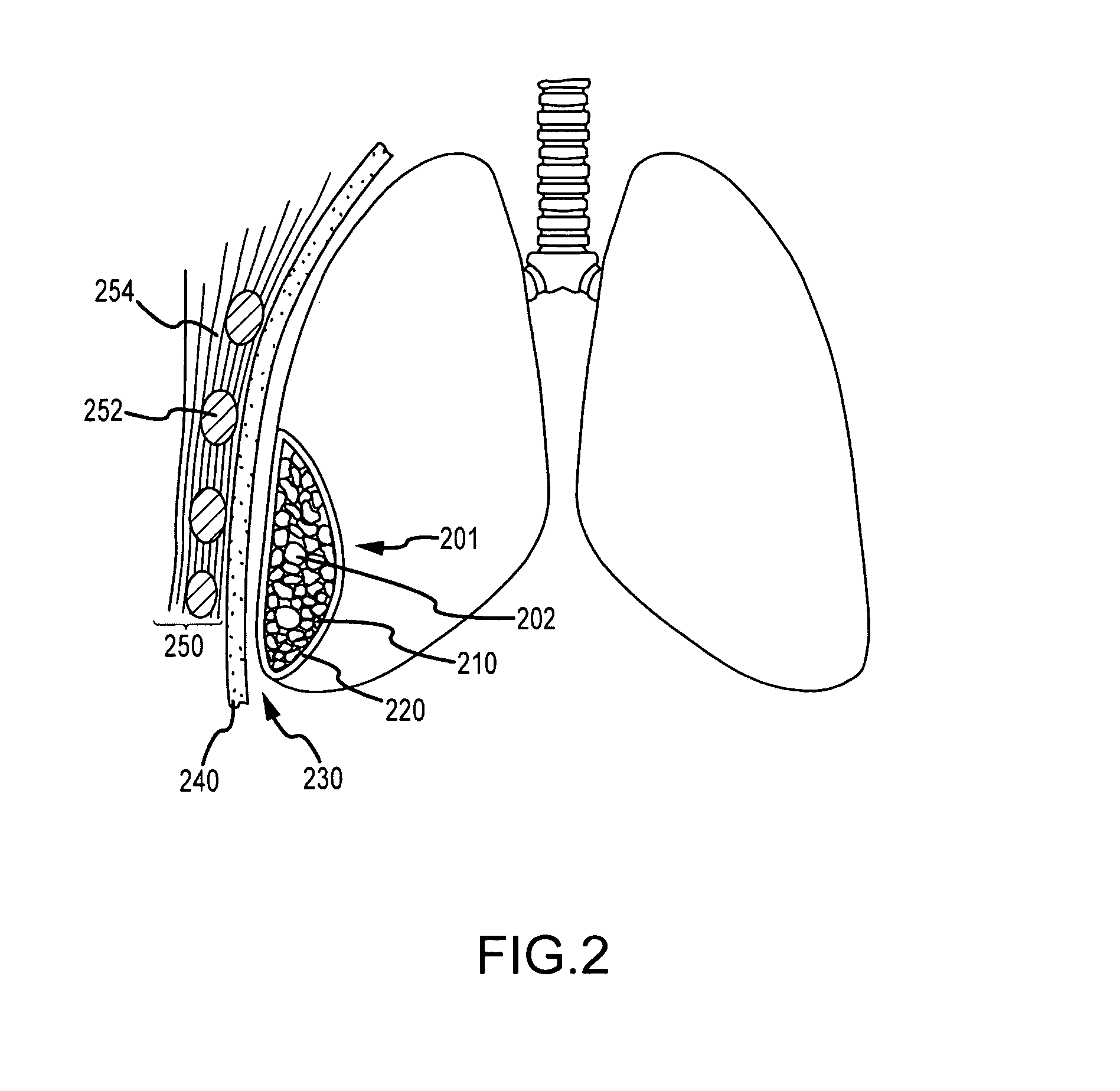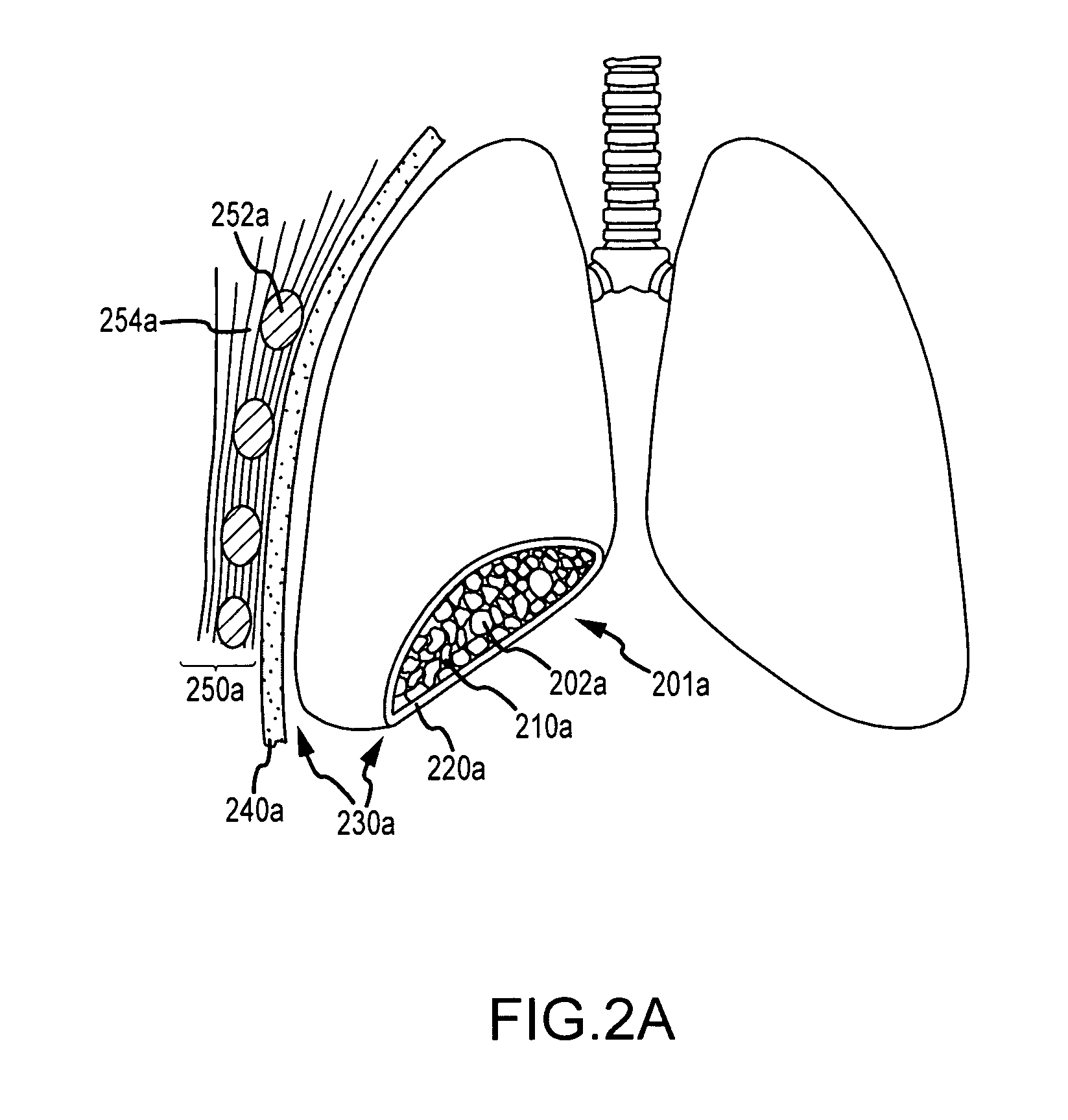Use of a regenerative biofunctional collagen biomatrix for treating visceral or parietal defects
a biofunctional collagen and parietal technology, applied in the direction of drug compositions, peptide/protein ingredients, surgery, etc., can solve the problems that the use of surgical sealants alone or as a support for staples or sutures has not been generally effective in reducing the incidence of aal (alveolar air leakage) and paal, so as to facilitate the migration of fibroblasts, avoid or inhibit persistent tissue leakage, and improve lung function
- Summary
- Abstract
- Description
- Claims
- Application Information
AI Technical Summary
Benefits of technology
Problems solved by technology
Method used
Image
Examples
Embodiment Construction
[0046]Serous membranes associated with various organs of the body typically include a visceral layer and a parietal layer. Serous cavities include the pericardial cavity which surrounds the heart, the pleural cavity which surrounds the lungs, and the peritoneal cavity which surrounds many abdominal organs. Embodiments of the present invention encompass the use of a collagen biomatrix for the treatment of tissue and visceral or parietal membrane defects or leaks, such as those which may be found in organs such as the lung. The lung is surrounded by a pleural visceral membrane, which is thin delicate serous tissue. Damage to the pleural visceral membrane and lung tissue, for example in conjunction with resections to different degrees (lung resection surgery), can present life-threatening complications for the patient. Postoperative tissue leaks and air leaks are a frequent complication after pulmonary resection for lung cancer or other pathologies in the lung tissue, such as fibrosis ...
PUM
| Property | Measurement | Unit |
|---|---|---|
| thickness | aaaaa | aaaaa |
| thickness | aaaaa | aaaaa |
| thickness | aaaaa | aaaaa |
Abstract
Description
Claims
Application Information
 Login to View More
Login to View More - R&D
- Intellectual Property
- Life Sciences
- Materials
- Tech Scout
- Unparalleled Data Quality
- Higher Quality Content
- 60% Fewer Hallucinations
Browse by: Latest US Patents, China's latest patents, Technical Efficacy Thesaurus, Application Domain, Technology Topic, Popular Technical Reports.
© 2025 PatSnap. All rights reserved.Legal|Privacy policy|Modern Slavery Act Transparency Statement|Sitemap|About US| Contact US: help@patsnap.com



